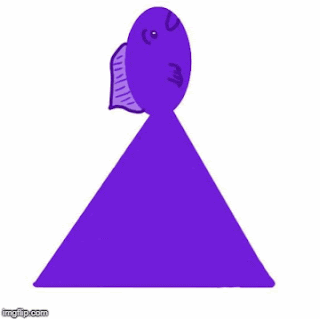A Little Fishy
Hello and welcome to the second AP (Action Project) for our geometry workshop, Prove It or Lose It. In this workshop, we have studied a plentitude of things like deductive reasoning, analytical writing, logical argument in algebra and geometry, complementary and supplementary angles, combinations, and Pascal's Triangle. Our AP includes both Pascal's Triangle and combinations since Pascal's Triangle's are based on combinations!
Combinations are basically a set of data that is broken up into groups of the variables in the data set. For example, AAC our set of data can get broken up into 6 different combinations: AAC, ACA, CAA, AAC, ACA, and CAA.
And here is my little creative representation of Pascal's Triangle:
Combinations are basically a set of data that is broken up into groups of the variables in the data set. For example, AAC our set of data can get broken up into 6 different combinations: AAC, ACA, CAA, AAC, ACA, and CAA.
Named after French mathematician and philosopher, Blaise Pascal, Pascals Triangle is a triangle array of numbers which end with the number 1 at each end. The other numbers are the sum of the two closest numbers from the row above. Some people speculate that he stole the concept from previous Chinese mathematicians. Here are some really cool things about Pascal's Triangle and how you can use it!
And here is my little creative representation of Pascal's Triangle:
This is Finley the fish! He has scales that make Pascal's Triangle when numbered, which you can see numbered on the gif I made of him!
I really enjoyed researching Pascal's Triangle, it really is an interesting math concept with so many intricate subsets of math in it! I wonder still what more you can do with Pascal's Triangle. If I were to do this again I would probably go into something more along the lines of probability and Pascal's Triangle like my example of the coin toss in the slideshow!
Citations
Math is Fun. "Pascal's Triangle." Mathisfun.com. n/a. Accessed Oct. 23, 2018.


Comments
Post a Comment